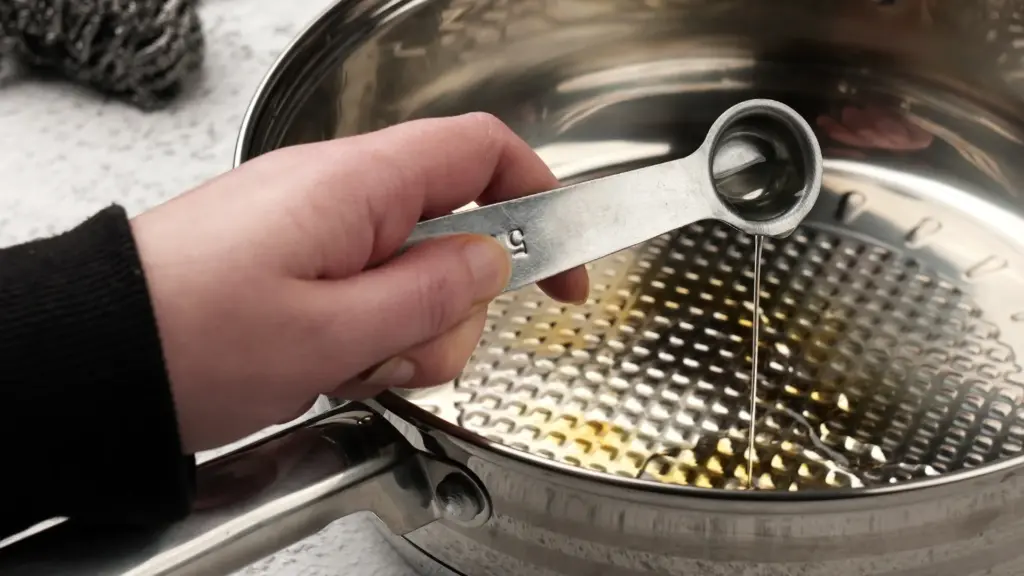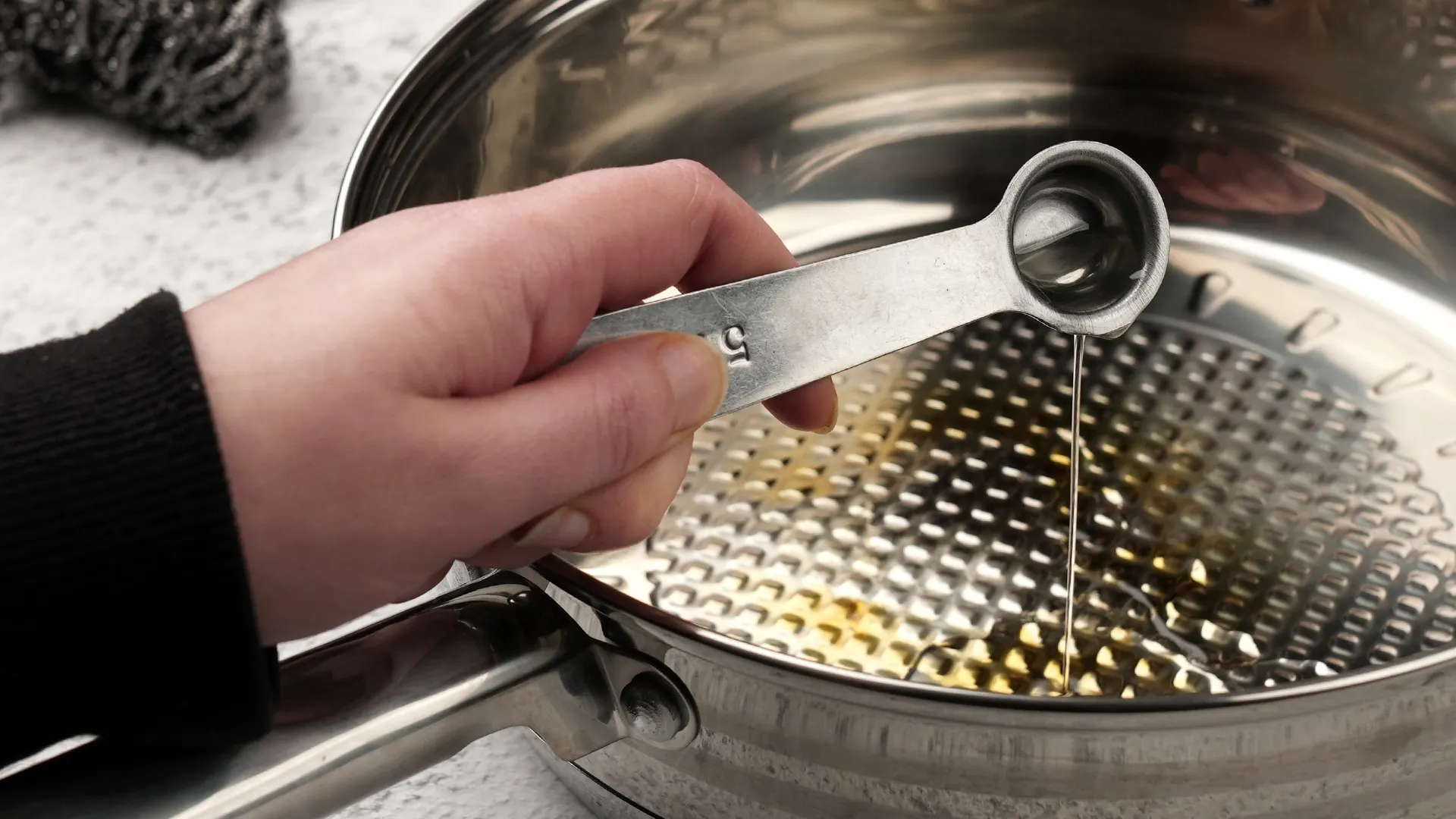
Can I Use Cooking Oil in a Non-Stick Pan? A Comprehensive Guide
The question of whether you can I use cooking oil in a non-stick pan is a common one, and the answer isn’t always straightforward. While non-stick cookware is designed to minimize sticking, the type of oil you use and how you use it can significantly impact its performance and lifespan. This comprehensive guide will explore the best practices for using cooking oil in a non-stick pan, addressing concerns about safety, effectiveness, and longevity.
Understanding Non-Stick Pans
Non-stick pans typically feature a coating, often made of Teflon (PTFE) or ceramic, that prevents food from adhering to the surface. This makes cooking and cleaning easier. However, this coating is delicate and can be damaged by high heat, abrasive utensils, and certain types of cooking oil.
The Role of Oil in Cooking
Cooking oil serves several crucial functions: it transfers heat evenly, prevents food from sticking (even in non-stick pans), and contributes to the flavor and texture of the dish. Choosing the right cooking oil is essential for optimal results.
Best Cooking Oils for Non-Stick Pans
Not all cooking oils are created equal when it comes to non-stick cookware. Some oils are better suited than others due to their smoke points and chemical composition. Here’s a breakdown of recommended oils:
- Refined Coconut Oil: Refined coconut oil has a high smoke point, making it suitable for high-heat cooking. It also has a neutral flavor that won’t interfere with the taste of your food. Using a small amount of refined cooking oil can help prevent sticking.
- Avocado Oil: Avocado oil is another excellent choice, boasting a very high smoke point. Its mild flavor makes it versatile for various cooking applications. It is a great cooking oil to use in a non-stick pan.
- Vegetable Oil: A common and affordable option, vegetable oil typically has a moderate smoke point. Ensure you’re using a high-quality vegetable cooking oil to avoid residue buildup.
- Canola Oil: Canola oil has a neutral flavor and a relatively high smoke point, making it a decent option for non-stick pans. However, some argue that it can leave a sticky residue over time, so use it sparingly.
- Grapeseed Oil: Grapeseed oil has a high smoke point and a light flavor, making it a good choice for sautéing and stir-frying in non-stick pans.
Oils to Avoid in Non-Stick Pans
Certain cooking oils can damage the non-stick coating or leave behind a sticky residue. It’s best to avoid the following:
- Extra Virgin Olive Oil: While healthy and flavorful, extra virgin olive oil has a relatively low smoke point. When heated beyond its smoke point, it can break down and leave a sticky residue on the pan, which is difficult to remove. The smoke point of extra virgin olive oil is generally around 375°F (190°C), which is easily exceeded during cooking.
- Butter: Butter, similar to extra virgin olive oil, has a low smoke point. It can burn easily and leave behind a stubborn residue that compromises the non-stick surface. While butter adds flavor, it’s better suited for regular stainless steel or cast iron pans.
- Cooking Sprays: Aerosol cooking sprays often contain chemicals and propellants that can build up on the non-stick surface, creating a sticky, difficult-to-remove layer. Over time, this buildup can diminish the non-stick properties of the pan.
Why Use Oil Even in a Non-Stick Pan?
Even though non-stick pans are designed to prevent food from sticking, using a small amount of cooking oil can still be beneficial. Here’s why:
- Enhanced Heat Conduction: Oil helps distribute heat more evenly across the pan’s surface, ensuring that food cooks uniformly.
- Improved Flavor and Texture: A touch of oil can enhance the flavor and texture of certain foods, especially when sautéing or frying.
- Extended Pan Lifespan: While it seems counterintuitive, using the right cooking oil can actually extend the life of your non-stick pan by preventing the coating from drying out and cracking.
How to Properly Use Cooking Oil in a Non-Stick Pan
To maximize the benefits of using cooking oil in a non-stick pan while minimizing potential damage, follow these guidelines:
- Choose the Right Oil: Opt for oils with high smoke points, such as refined coconut oil, avocado oil, or grapeseed oil.
- Use a Small Amount: A little goes a long way. Start with a teaspoon or two and adjust as needed. Overusing cooking oil can lead to unnecessary calorie intake and greasy food.
- Heat the Pan Properly: Preheat the pan over medium heat before adding oil. Avoid high heat, as it can damage the non-stick coating and cause the oil to break down.
- Distribute the Oil Evenly: Once the pan is heated, add the cooking oil and swirl it around to coat the entire surface. You can also use a silicone brush to spread the oil evenly.
- Monitor the Temperature: Pay attention to the smoke point of the oil you’re using. If the oil starts to smoke, it’s too hot, and you should reduce the heat immediately.
- Clean the Pan Properly: After cooking, let the pan cool completely before washing it. Use a soft sponge and mild dish soap to clean the surface. Avoid abrasive scrubbers or harsh chemicals, as they can damage the non-stick coating.
Common Mistakes to Avoid
Several common mistakes can shorten the lifespan of your non-stick pan and compromise its performance:
- Using High Heat: High heat can cause the non-stick coating to break down and release harmful fumes. Always cook over medium or low heat.
- Using Metal Utensils: Metal utensils can scratch and damage the non-stick surface. Use silicone or wooden utensils instead.
- Putting the Pan in the Dishwasher: While some non-stick pans are labeled as dishwasher-safe, it’s generally best to hand-wash them to prolong their lifespan. The harsh detergents and high temperatures of the dishwasher can degrade the non-stick coating.
- Storing Pans Improperly: Stacking non-stick pans without protection can cause scratches. Use pan protectors or place a cloth between each pan to prevent damage.
- Using Cooking Spray: As mentioned earlier, cooking spray can leave a sticky residue that’s difficult to remove. Stick to using small amounts of appropriate cooking oils instead.
Alternative to Cooking Oil
If you’re looking to minimize oil usage, consider using water or broth for certain cooking methods, such as steaming or braising. These liquids can help keep food moist and prevent sticking without adding extra fat. However, they may not be suitable for all cooking applications. For example, searing or frying typically requires cooking oil to achieve the desired results.
Extending the Life of Your Non-Stick Pan
Proper care and maintenance are essential for extending the life of your non-stick pan. Here are some additional tips:
- Seasoning the Pan: Some manufacturers recommend seasoning the pan before its first use. This involves lightly coating the surface with cooking oil and heating it in the oven at a low temperature. Check the manufacturer’s instructions for specific guidelines.
- Avoiding Thermal Shock: Avoid sudden temperature changes, such as placing a hot pan directly into cold water. This can cause the pan to warp or the non-stick coating to crack.
- Replacing the Pan When Necessary: Even with proper care, non-stick pans will eventually lose their non-stick properties. When the coating becomes significantly scratched or damaged, it’s time to replace the pan.
Conclusion
So, can I use cooking oil in a non-stick pan? The answer is yes, but with careful consideration. Choosing the right cooking oil, using it sparingly, and following proper care guidelines can help you maximize the performance and lifespan of your non-stick cookware. By avoiding high heat, abrasive utensils, and harmful cooking sprays, you can enjoy the convenience of non-stick cooking for years to come. Remember to always prioritize safety and replace the pan when the non-stick coating begins to deteriorate. Following these tips will ensure you get the most out of your non-stick pan while cooking delicious and healthy meals. Understanding the nuances of using cooking oil with non-stick pans is crucial for any home cook. [See also: Cleaning Non-Stick Pans Effectively] [See also: Best Utensils for Non-Stick Cookware]

